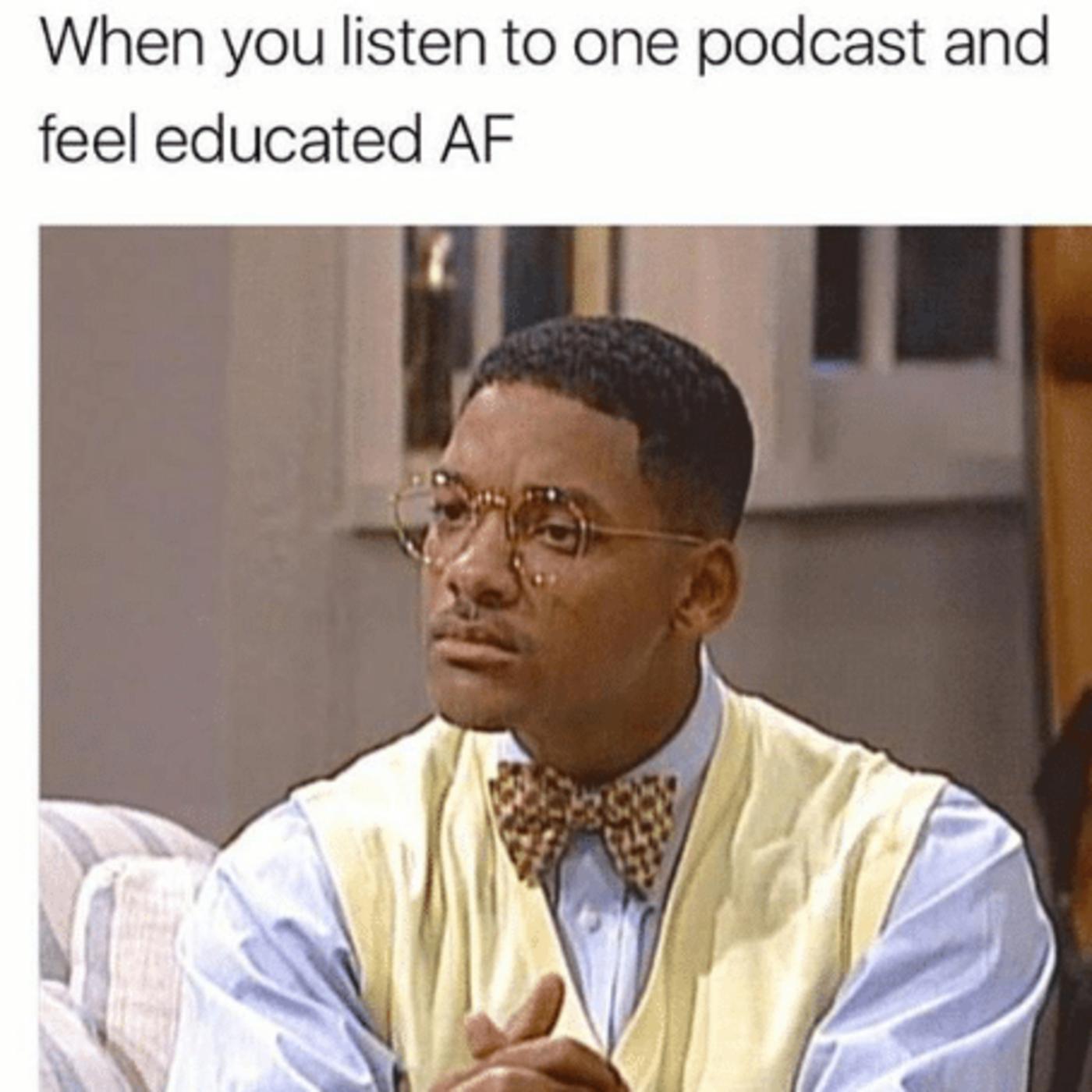Podcasting: How do you position yourself as an audio brand?

Future Media Hubs is constantly looking for new ways in which they can work with digital media. Needless to say, the first topic of their Meet The Makers event was “podcasting”. The day kicked off with two presentations by Catherine Lekime and Wouter Van Driessche, followed by a panel discussion with Floris Daelemans from Radio 1 on how to position yourself as an audio brand. An excellent question, since VRT is historically a television and broadcasting institution that started with radio in the 1930’s. Now, VRT is slowly shifting towards being an audio production house. What’s the strategy behind this transition? How can you create value with a radio show in an on-demand context? What makes for a good podcast? And how does a creator at VRT experience this relatively new way of storytelling?
The Audioteam
A little over a year ago, VRT started aiming at a radical digital change by hiring an audio team with Catherine Lekime as the editor-in-chief. Four people that previously worked in linear radio are now coördinating everything involving digital audio. Going from the process before to the process after the podcast and all there is in between. This was necessary since the TV and audio brands were already creating podcasts, but they were all doing it by themselves on their own platforms. This made it hard for listeners to discover new content. Besides cooördinating everything that means digital audio and podcasts for VRT, the Audioteam also focuses on building and safeguarding diversity within the total podcasting catalogue.
However, they are not creators themselves. The Audioteam started its mission by spreading the message throughout VRT that they were there to help with everything that is needed to create digital audio, which is much more than a radio program that is simply uploaded online.
Going from VRT NU to VRT MAX
On the 29th of August 2022, VRT MAX was born. VRT MAX is VRT’s online platform and a one-stop shop for all its digital content. This also includes audio, which hasn’t always been the case. Before VRT MAX there was the video app VRT NU (VRT NOW), which just last year slowly started transitioning into a video and audio app. By gradually putting podcasts in the app as sort of an experiment, the team learned that even though people found their way to the podcasts, there is also still a demand for live radio. That is when VRT started redirecting traffic from their separate radio brand websites and apps to VRT NU, which turned it into not just a podcast platform but a “listening” platform.
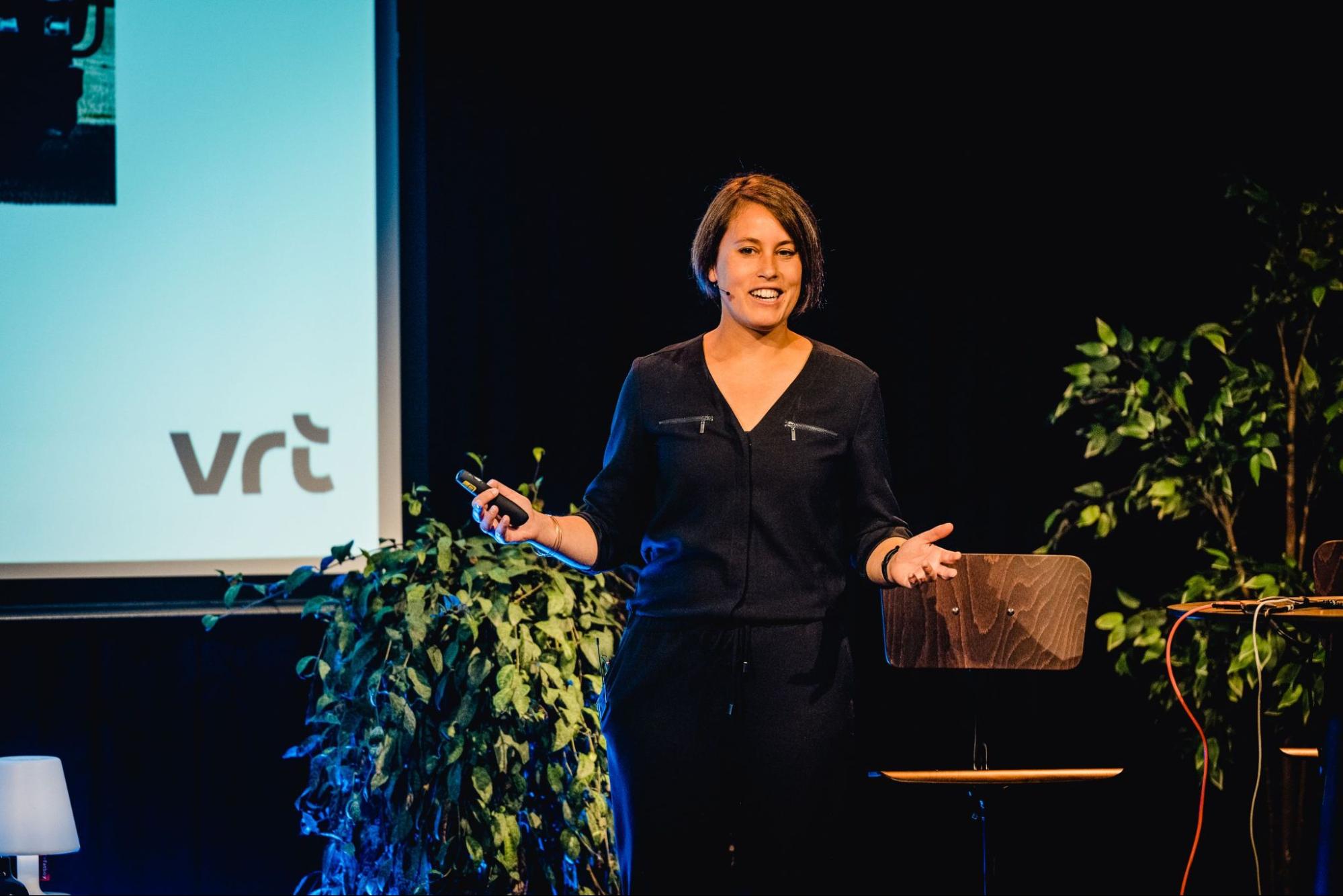
Since the VRT MAX rebrand was coming up, the transition started without a big campaign. Letting the audience know where they could find all VRT-branded content proved to be enough to direct listeners to VRT NU. By radio hosts announcing people could listen on the app or website instead of “your favourite podcasting platform” and putting the same VRT NU branding on all of the marketing, the reach was almost on the same level as that of Apple podcasts.
Bringing the audio and video content together provides the app with a large content catalogue. In the morning people can listen to podcasts, while in the evening they can watch video content. By creating a one-stop shop, VRT provides the consumer with both of those experiences all day long. Besides that, it is also cost-efficient to have one overarching app instead of investing in two separate ones.
VRT talked to users and broadcasters about how they experienced double or single apps. One app means one marketing and innovation budget, more scale and volume and a larger catalogue of audio and video content people can discover. With all of that knowledge, VRT MAX was built.
Outspoken
Wouter Van Driessche is the creative director of the podcasting agency UITGESPROKEN (OUTSPOKEN). UITGESPROKEN works with a variety of brands, VRT MAX being one of them. The mindset at UITGESPROKEN is that as long as it will make a great podcast, Uitgesproken is open to creating or co-creating it.
When Wouter went into podcasting he was a journalist and did not have any audio background whatsoever. That is why Wouter talked about the things he wishes he’d known five hundred podcast episodes ago. One of them is that podcasting is not rocket science, but it’s more complicated than you think.
There are two important questions you have to ask yourself before you go into podcasting: why am I making a podcast? And who am I making it for? This should inform every decision you make. It is also very often the answer to why something becomes successful or not. Wouter gave an example of when he worked for De Standaard. When the Belgian newspaper started creating its own news podcast: DS Vandaag, they asked themselves: what will differentiate this from the regular news? Ultimately, De Standaard aimed their podcast at a younger audience, resulting in younger marketing and makers and hosts in their twenties, asking the questions their peers or other people in their twenties would ask themselves.. The set-up later evolved, but the why and who for has to be in the back of your mind at all times. From the branding to the content itself.
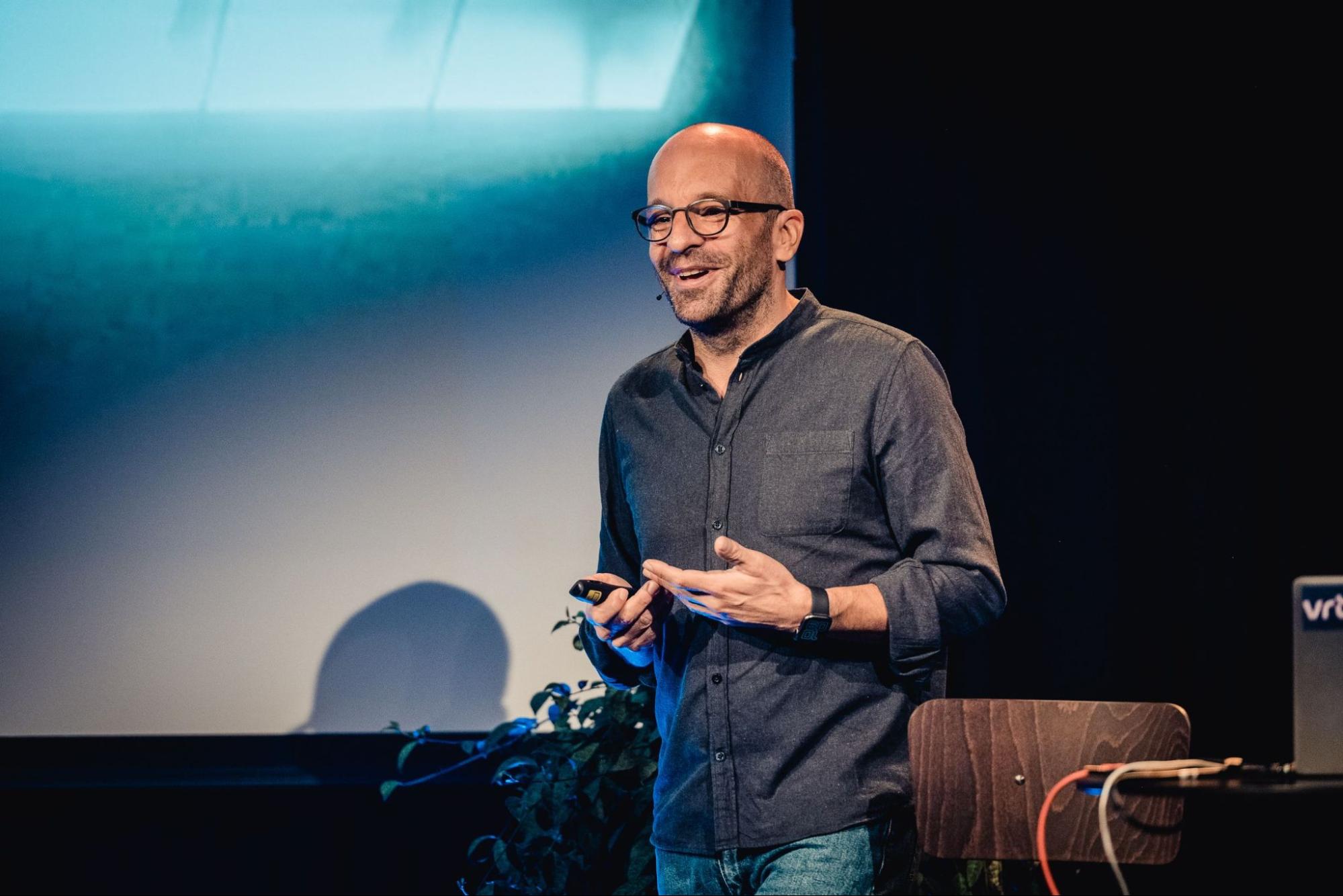
Be consistent, be persistant, be patient
DS Vandaag started with a small number of listeners, compared to the reach of a traditional newspaper. But after a couple of weeks, the audience started growing. However, Wouter felt they had an impact that couldn’t be measured just by numbers. Two years ago, DS Vandaag had more than 100,000 listens and downloads a week. The moral of the story is that it takes time. There is no use in looking at the numbers until you are at least two to three months along. It is also possible that the vast majority of listeners won't find their way to your work until after the podcast series is already published in its entirety.
Another storytelling tip that Wouter shared is to make your podcast personal, concrete and relatable. An example is a podcast UITGESPROKEN created for the city of Antwerp called “Allemaal Antwerpenaar” Here, instead of an expert explaining topics like racism, intimidation and exclusion, real people living in Antwerp give testimonials about how those things have an impact on them. According to Wouter, personal storytelling is what podcasts were invented for.
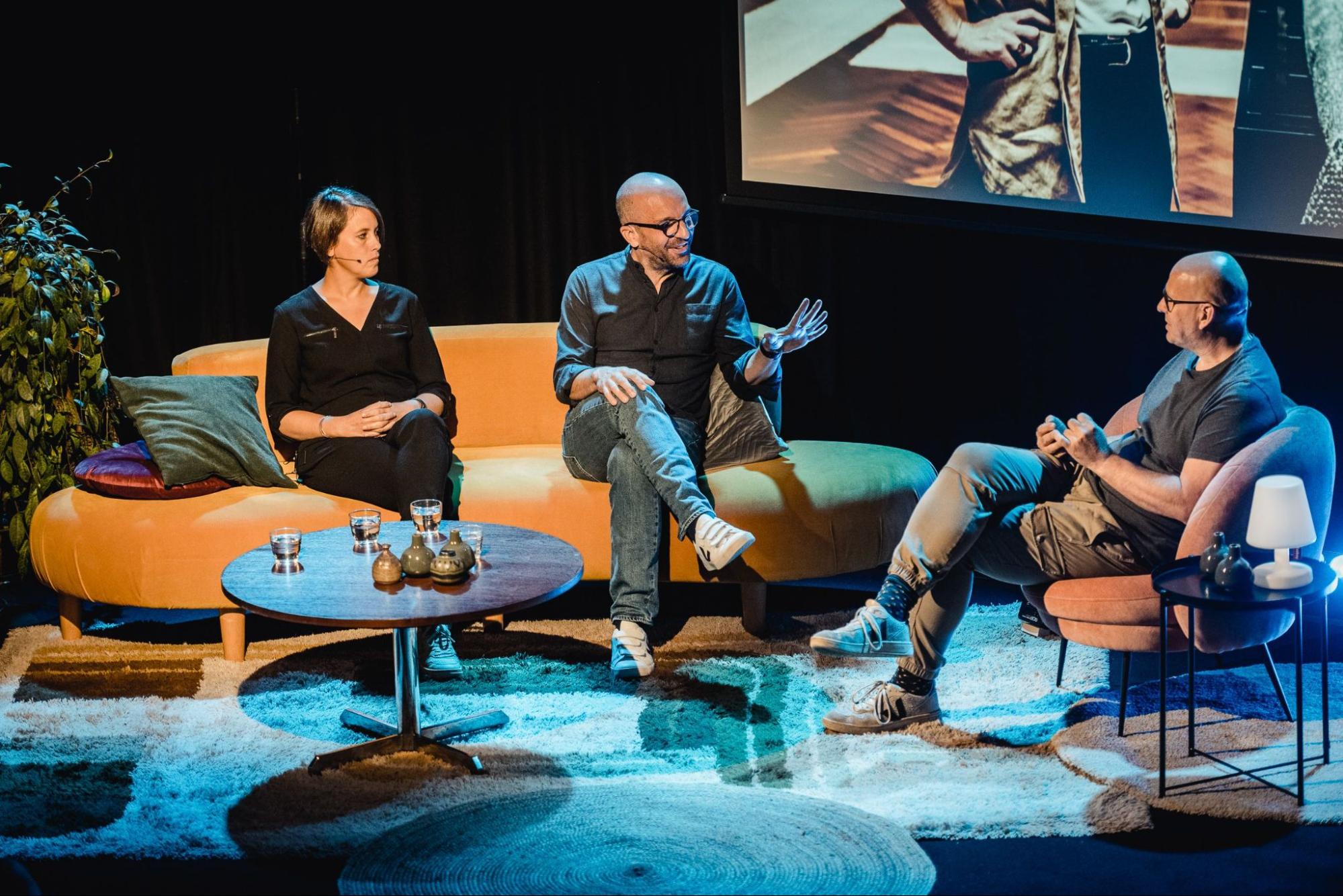
Layers, layers and more layers
Layers in television and video editing are in a way quite straightforward: you have the image, sound and sometimes text. In podcasting, there is no visual aid, nothing to distract the viewer. So editing works very differently with endless possibilities for adding layers on top of each other. This is what makes some of the best music that’s out there, but it is also what makes some of the greatest podcasts. Because it makes for a way more compelling listen than when one would simply read a script out loud. Wouter advised using every trick in the book when it comes to podcasting because all the magic is in the editing.
But a podcast is more than just a podcast. You have to attract listeners in every possible way. A podcast is also a logo, a title, a photo, an Instagram post and a campaign. Wouter gave an example of a new podcast called “Zot schoon”, where they simultaneously launched Instagram videos with the same typography as the logo. UITGESPROKEN puts a lot of effort into marketing and distributing each podcast. All of that also helps to build your audience.
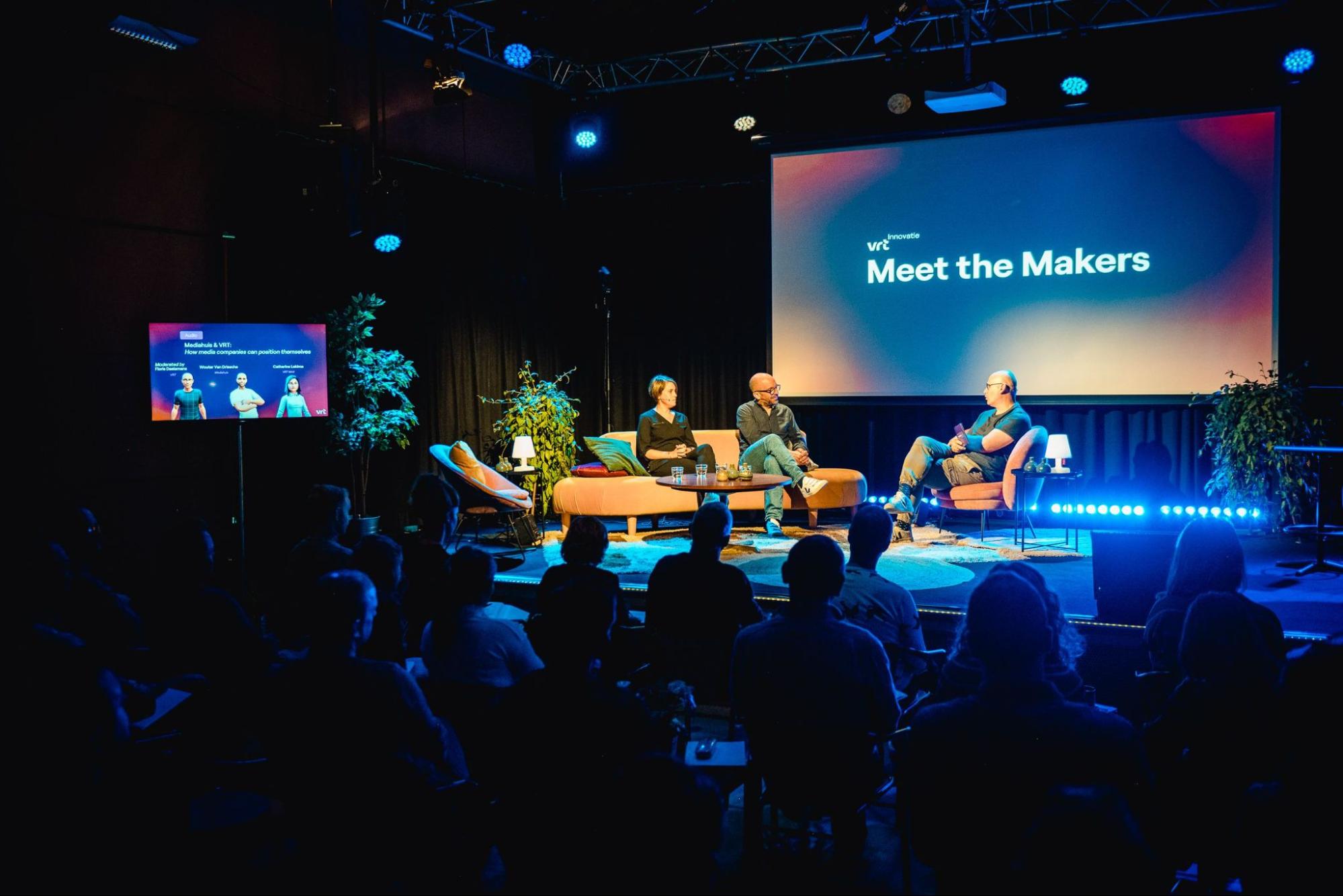
The power of podcasting
UITGESPROKEN doesn’t have to convince any clients of the power of audio. Generally, someone in the communications or marketing department at a company is already a podcast listener and wants to do something with the medium for their brand. The discussion is more often about what makes a good podcast. Because not every idea also makes for a good listen. Some ideas are better as an article or a video.
At VRT, the commissioning works a bit differently. There are a lot of people with podcast ideas, so VRT created a system in which they weekly evaluate how they could produce those based on a standardised form everyone has to fill in. People see podcasting as a new opportunity to tell stories they’ve always wanted to tell, but producing it is quite costly.
The change from traditional radio to podcasting “on demand” proves to be a challenge, since a great radio show doesn’t necessarily mean a great podcast. This makes sense because on the radio you want to reach as big of an audience as possible, with a podcast you aim for a community. VRT wants to help its creators with the little laws of on-demand listening. For example: instead of putting a radio show out as a podcast, why not create the podcast first and then put it out as a broadcast?
Something that, according to Wouter, is also important is to make sure that creating a podcast is a nice experience. The best way to get your organisation enthusiastic about audio is to make great things, so make sure that what you put out is never going to embarrass the people that are part of it. Because with audio there is no in-between. It is either really good or it’s awful. Besides that Wouter also emphasised the importance of creating a pleasant environment. This has nothing to do with strategy, but with cultivating an environment that is quite often overlooked in media productions because of stress or tight deadlines.
Bless the mess
Anushka Melkonian is one of the hosts of the podcast “Bless The Mess”, which originated at the radio station MNM. Together with her best friend Kawtar Ehlalouch, she is VRT MAX’s big podcast sister. Since Bless The Mess just went into its second season and reaches the notoriously difficult demographic of 15 to 30-year-olds, we asked Anushka about a few of their secrets.
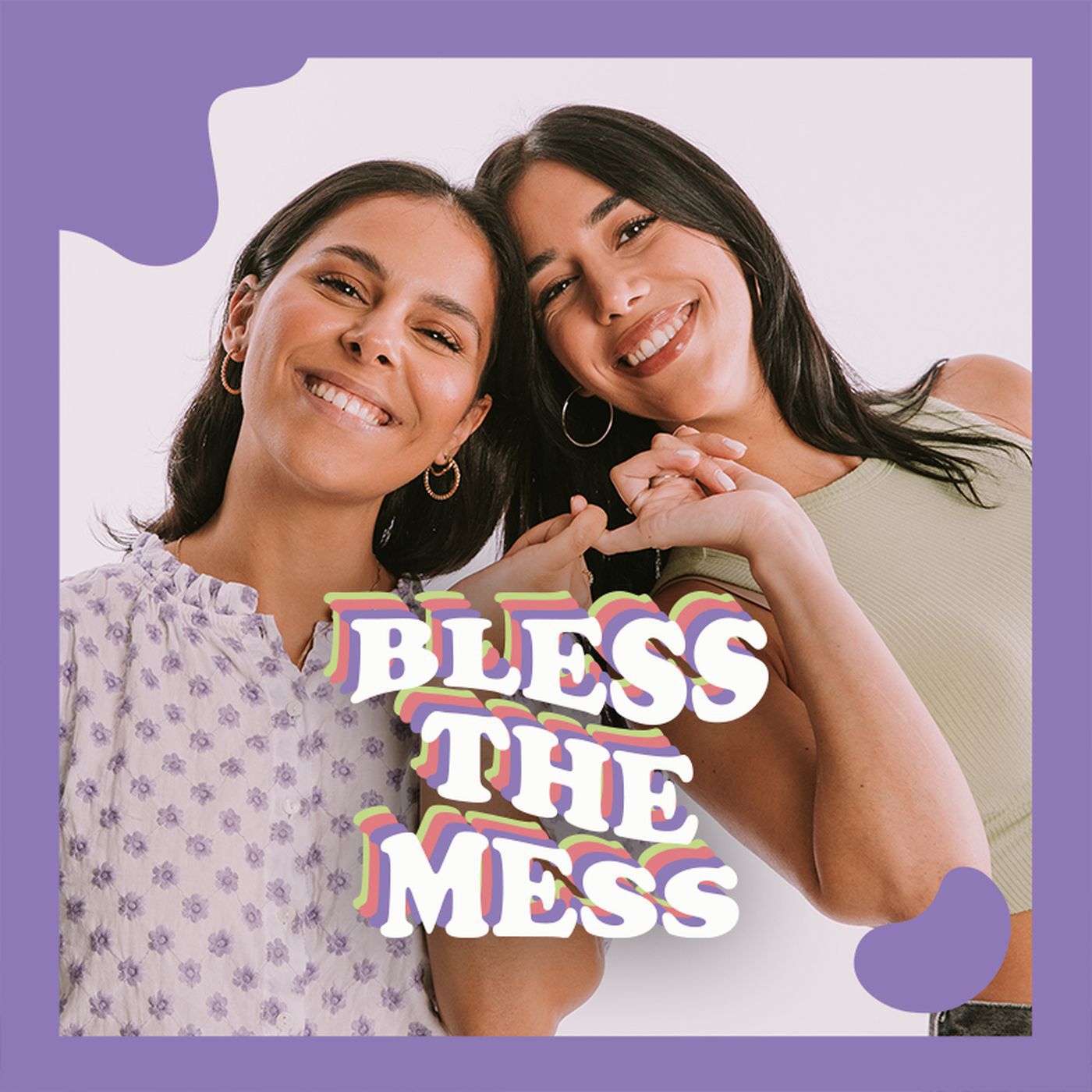
What started as a lockdown-idea, turned into a successful podcast that reaches a young and diverse group. What makes Bless The Mess unique is that there are a lot of opportunities to create a community within the target demographic, something that was also noticed by Catherine Lekime and the rest of the Audioteam. By focusing even more on the community, they actively work on the sense of connection they get with the audience. Anushka and Kawtar do this by asking for input, opinions, help or people’s personal stories. Bless The Mess is also active on Instagram and TikTok and there is a notable difference with the first season in the sense that there is one platform where everybody comes together, instead of being scattered over their personal accounts.
According to Anushka, podcasting is a powerful platform because of our fast-paced community: people want to multitask, and podcasting is the best way to learn or be entertained while you’re going through the motions of everyday life. As she calls it: “Distraction, but in the least distracting way.”
One of the things Anushka has learned in the last year is that it works well to really be yourself. One of the strengths of a podcast like Bless The Mess is that the hosts don’t have a lot of inhibitions. This makes the listeners feel like they are part of a real conversation between two best friends. The less you worry about what people are gonna think about what you are saying, the more authentically the audience will connect with it.
Another thing Anushka and Kawtar worked hard on was to, as Wouter also said, make something look very easy. Even though a listener might feel like they are a part of an organic conversation, Anushka and Kawtar put a lot of work into the preparation and structure of an episode. In that sense, a good podcast is a little bit like a radio show: there is a general thread and a clock you are working with. Now that Anushka and Kawtar have been working on Bless The Mess for a little longer, it’s less about preparation on paper and more about sticking to the structure.
What have we learned
A podcast is a great way of storytelling, but it’s much more than just people talking. Before “just talking” there is preparation and creating a structure. After, there is intricate editing with lots of layers and an extensive marketing campaign. If you want to create a successful podcast, you can not skip any of these steps. It’s also important to keep in mind that, although both are auditory media, there is a big difference between a radio show and podcasting., With the first, you aim for as many listeners as possible, while with a podcast, you are building a community over time.
